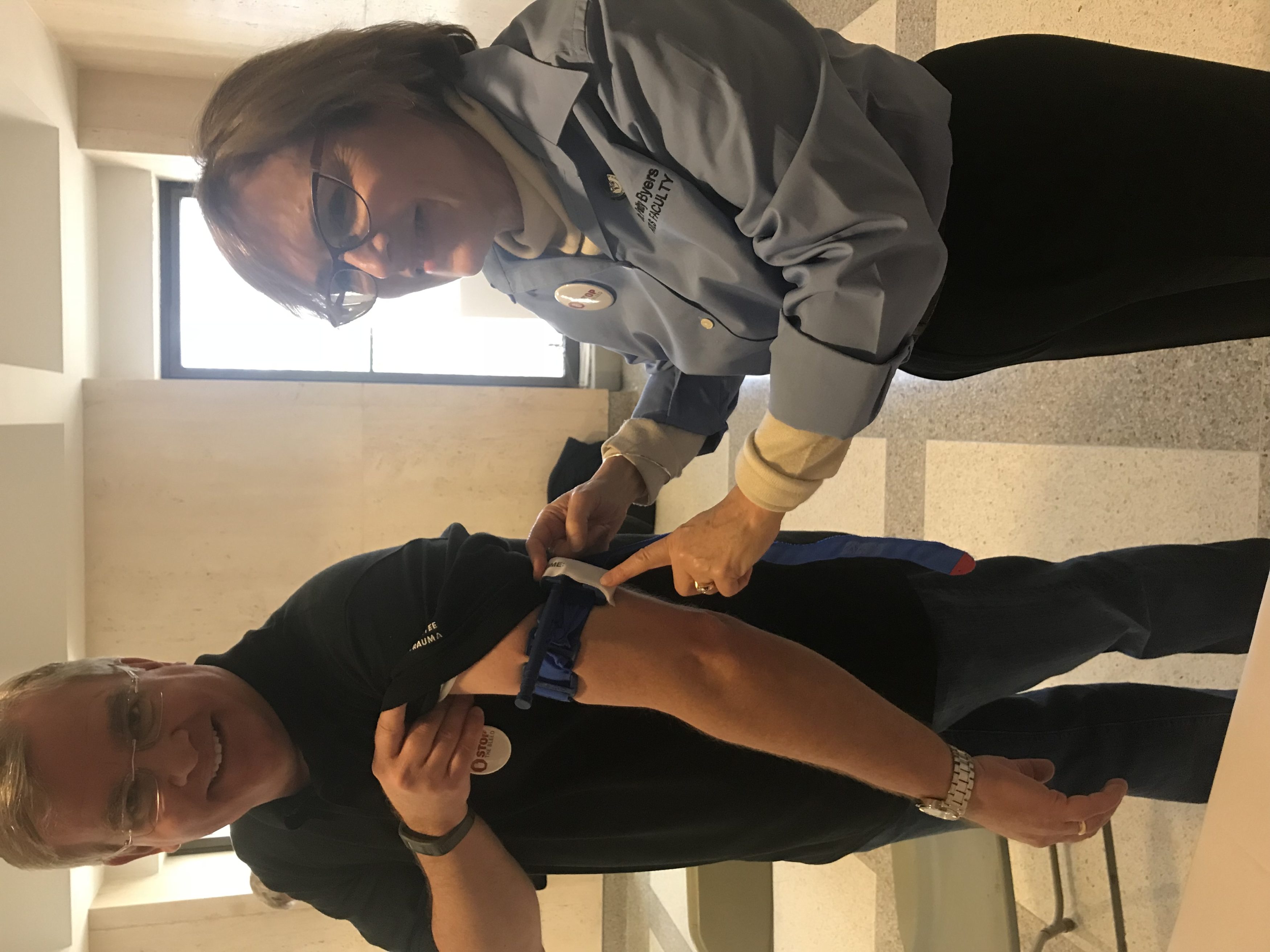
There’s an old saying in journalism: if it bleeds, it leads — meaning readers and viewers generally are pulled to gory stories.
On Wednesday, the Florida Chapter of American College of Surgeons used a similar approach to attract an audience. The group had several trauma-treatment stations on display in the third-floor rotunda of the Capitol.
Dubbed “Stop the Bleed,” the initiative seeks to teach the public and legislators how to react to trauma situations, which might include gunshot wounds, deep lacerations, amputations and other accidents.
Fabricated, pliable limbs were placed on tables with different ‘wounds.’ Those interested in discovering how to prevent someone from bleeding out in an emergency situation could learn the necessary steps in about 5 minutes.
Showing this writer how to ‘stop the bleed,’ a representative from Tallahassee Memorial Hospital explained the key is to “compress and control” a bleeding wound. Without a trauma first aid kit, this can be accomplished by pressing a clean cloth deeply inside a wound and holding firm pressure.
With a trauma kit — also available on display Wednesday — a tourniquet can be used to halt blood flow to the affected area. The tourniquet will cause pain, according to those at the event, but it’s often necessary to save someone’s life.
The trauma kits include a tourniquet that can be time stamped, gloves, compression bandages, wound dressing material and an instructional booklet on how to clot a wound. A personal kit runs around $70.
Dr. Patty Beyers, president of FCACS, said the initiative started after the realization that much of the public is unaware of the simple techniques that can be used to halt blood loss.
She cited the Sandy Hook massacre.
“Many of [the victims] died from extremity bleeding,” Beyers said. She added that tourniquets could have prevented many of the deaths.
Beyers said the organization would like to see the state one day require all public facilities with an AED to also equip trauma kits.



